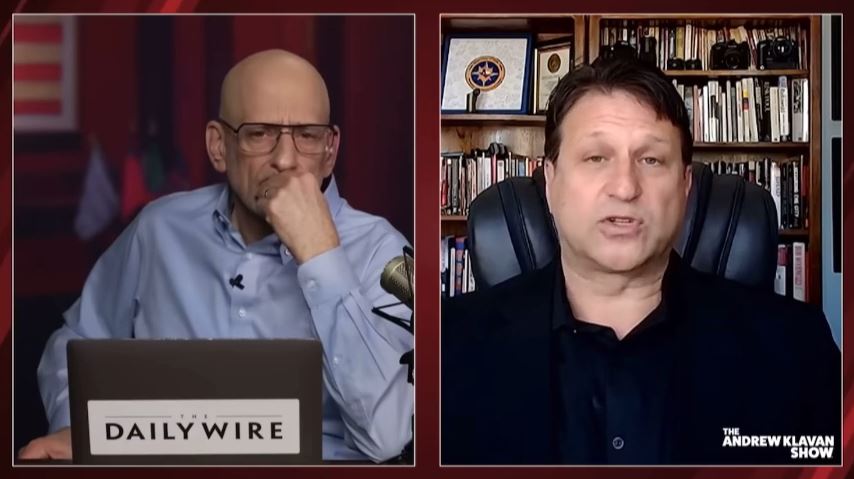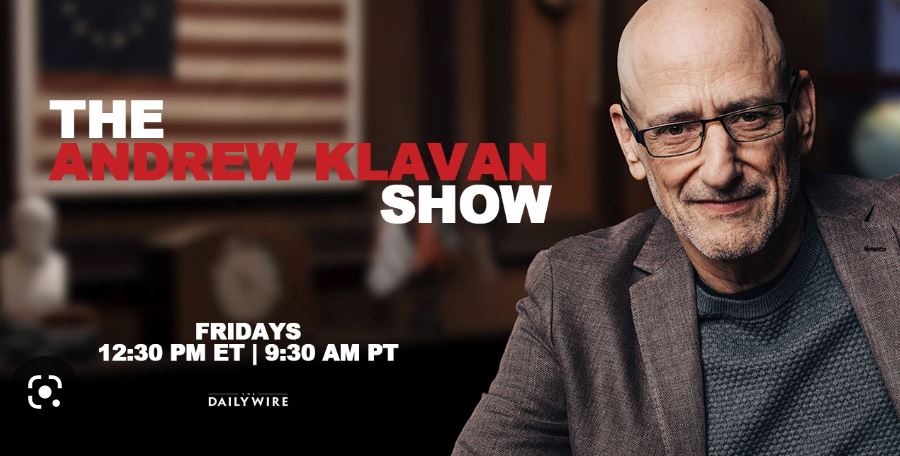
Subscribe to Andrew Klavan’s Youtube channel here
Interview Excerpts
“The numbers coming through are just astronomical. We’ve never seen anything like any of these numbers, in any of our lifetimes. And I think that’s why I wrote the book, because that is an historical event for America. Why not write a book about an historic event? I’m surprised I’m the only one.”
Klavan: Todd Bensman has been doing some fantastic reporting. I’ve been watching videos of him, and I’ve been watching through my hands because he really does take incredible risks. He’s now written a second book on the subject. It’s called Overrun, How Joe Biden Unleashed the Greatest Border Crisis in U.S. History. In the promotion for the book, you know it says you risked your life to write this book, and I have to say that’s true. Can you talk about that a little? What is going on down there that you have to risk your life just to report the story.
Bensman: I typically don’t like to… I do mention that in the book. There are a couple of incidents. The book is not about me so much as about the border circumstances, the situation down there. I spend a lot of time with the immigrants, and when you go down into northern Mexico you have to, you know, think about risk and how to mitigate it, and there are cartels down there that you want to avoid. There are certain rules that I follow to, you know, kind of get through it and to, you know, kind of get through it and get my material and get out. And actually, the worst case for me happened not in Mexico but in Costa Rica on the Nicaragua border. I recount an episode there where, because of some of the reporting I was doing, having to do with corrupt Nicaraguan soldiers who were in on the smuggling, that I did have a credible murder threat and had to literally flee this town, immediately, with all my belongings, for, you know, my life. And I kind of recount that one. But again, the book’s not about those kinds of adventures so much as a way to kind of get into the story of what’s going on and what’s happening down there and how the smuggling works and who all’s involved in all of the smuggling.

Klavan: You mention Joe Biden, how Joe Biden unleashed the greatest border crisis in American history. It’s the subtitle of the book Overrun. But, you know, there are a lot of people who are angry at Trump – Anne Coulter comes to mind because he ran on this build the wall, build the wall. What was the state of the border when Trump left? And he didn’t build the wall, that’s why they’re angry. What was the state of the border when Trump left office?
Bensman: Sure. Well, there was a mass migration event under his watch, in 2018, 2019. About a million people got in. But what was typical about Trump, which would be typical about any and every US president up until Biden, is that he worked as hard as possible to get his arms around it and wrestle it down. And was able to successfully wrestle down his mass migration crisis by the time Biden entered office. And just to give you an idea, at the height of that one, there might have been maybe 100,000 a month coming in, 150,000 a month, which was stunning to some of us. But by the time he left office, he had it down to 20,000 or 30,000 a month. He used this kind of cocktail of policies. And also the pandemic played a role in that, in the final months, because you had Title 42 where a hundred percent of everyone got pushed back into Mexico that we caught. Very deterring, that thing, as well. When Biden came in, however, he opened up these vast exceptions to Title 42 for family groups and unaccompanied minors and pregnant women and certain nationalities. And so within a week, we had hundreds and hundreds of thousands just pouring through the breach. By the time the second month was up, we were pushing 200,000 a month. By the time we got six months into the thing, we were at a quarter of a million a month, 50,000 a week, and it’s never let up. It’s been going on like that for two years straight. So you went from 30,000 to 200,000 every month. And we probably let in a very significant portion of them into the country, which is why it’s happening. By my calculation, about three-and-a-half million of those foreign nationals were actually let in. And they send selfies home to the home village and then they come. And that’s how it all works. It snowballs.
Klavan: Wow. Obviously, there are all kinds of problems with this in terms of not having control of our own population, who comes to live here and all this. But what are you seeing when you go down there? What are the dangers that we’re facing?
Bensman: I see the world turned upside down and so does anybody who’s ever spent any appreciable amount of time down on the border. Where you just have, for months and months and, really, years now, this kind of D-day invasion craft landings constantly over the Rio Grande. Four, five, six boats abreast just coming all day, all night and dropping their loads TO the Border Patrol and TO the national guard. It’s been a handoff situation with the smugglers right there in front of them. They all knew each other by first name and, ‘how many more ya got, Jose, over there?’ And I mean, it really was an amazing… like the cat-and-mouse, cops and robbers thing was over. And things just stayed like that because it was a fiat from Washington that, you know, we’re just letting all these people in. Within a day or two you could see the conveyor belt, this roaring conveyor belt into the country. That was Border Patrol buses would drop them off at an NGO on the border and the NGO would arrange for them to get on commercial buses to anywhere in the country they wanted to go. Seven days a week. All day long, every day. For weeks. For months. And now for years. This conveyor belt just roaring bus loads and plane loads of people into the American interior. Millions. That’s what it looked like. If you’ve watched my videos, you can see me right in the middle of these, the Border Patrol buses pulling up to the Greyhound buses, letting everyone out. They process in the building and then there’s a whole other line to the Greyhound bus. That’s what it looks like.